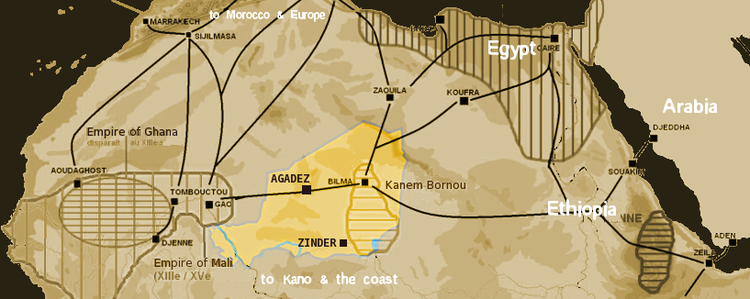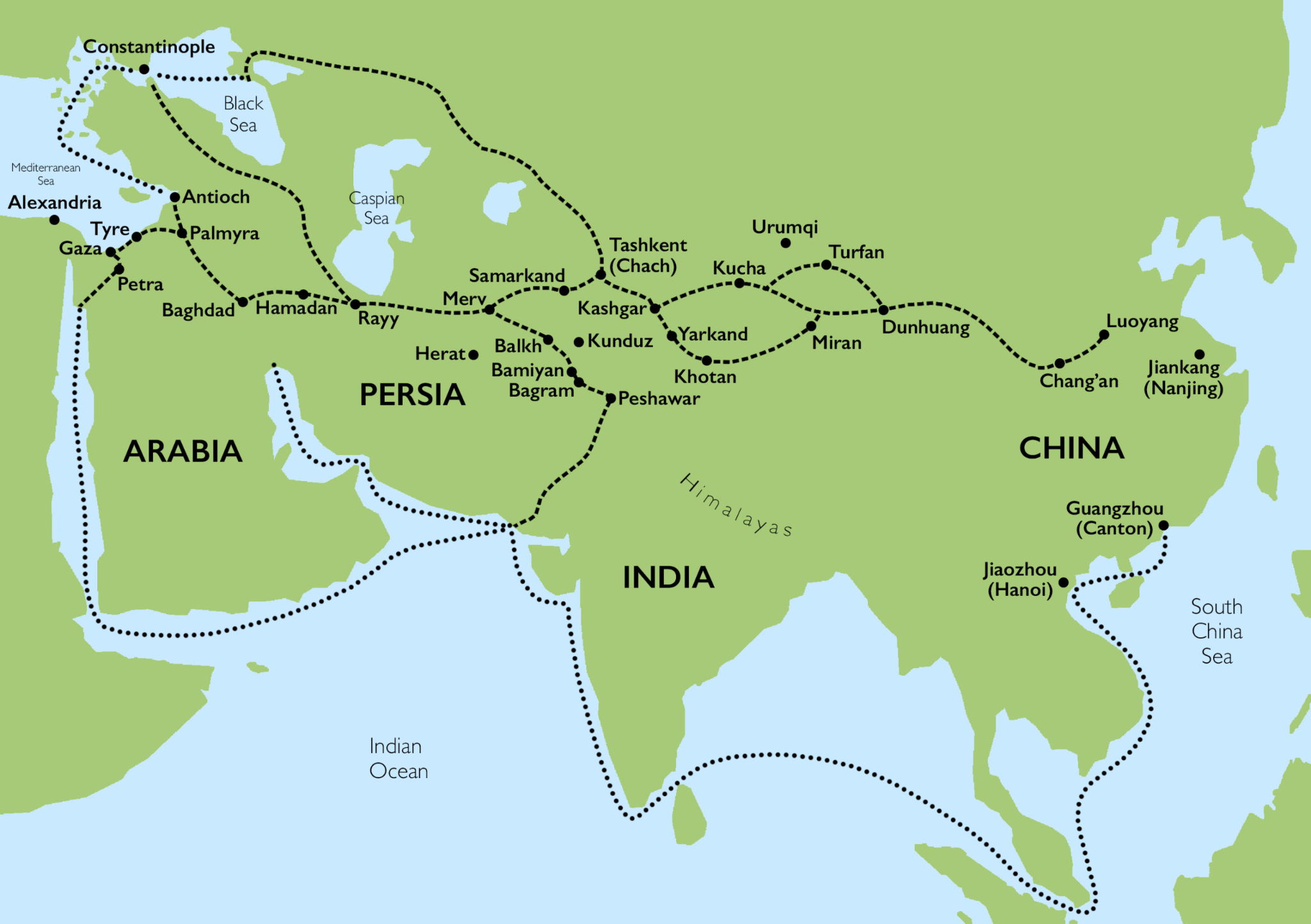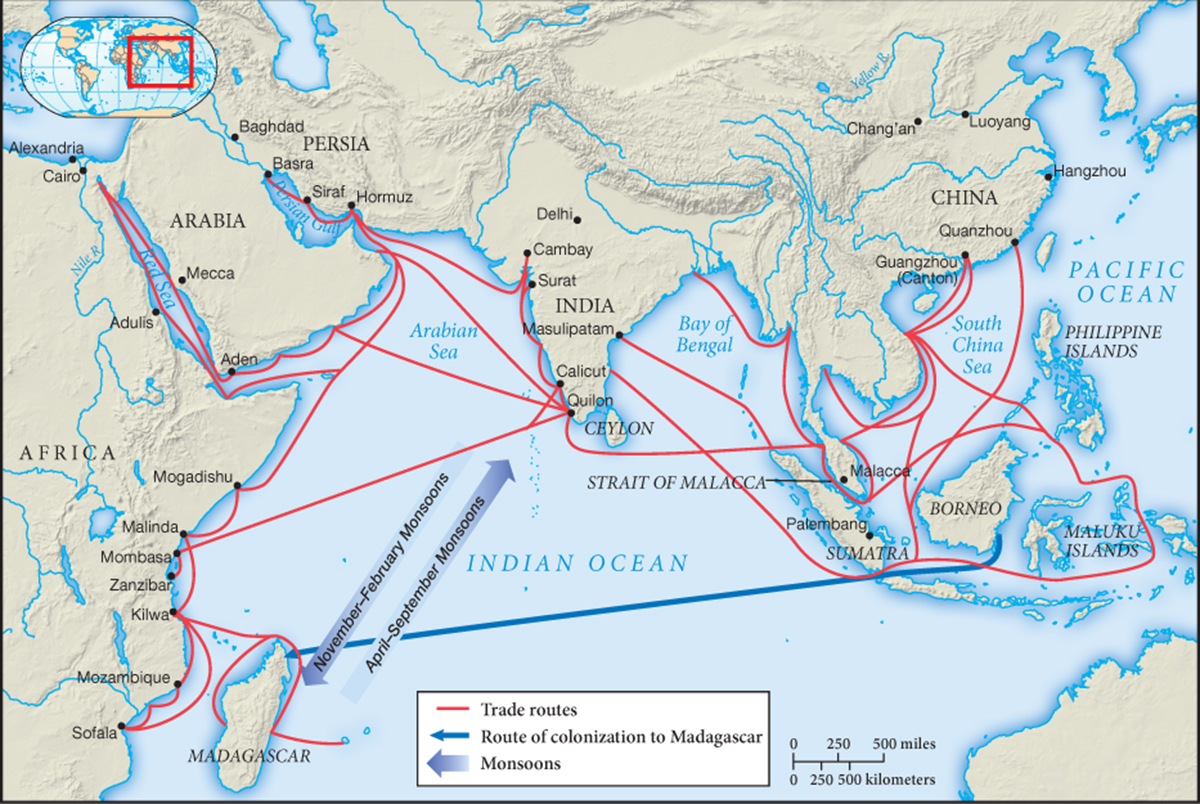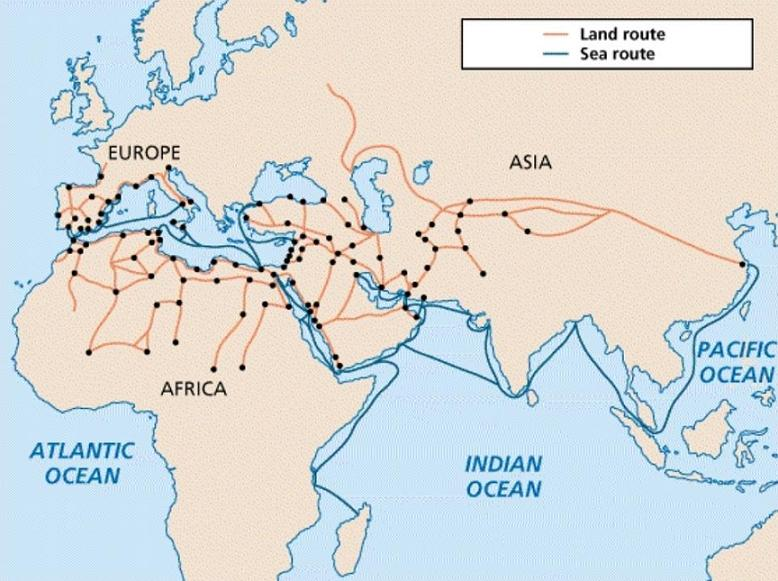Society and economy (750–1400) (IB)
Society and Economy (750–1400)
Functions of Society
Feudalism
Most common system in Europe.
A hierarchy that centered around land.
The people involved and their roles from top to bottom in the hierarchy:

Serfdom
A system in which serfs provided labor in exchange for protection and a place to live.
Knights
Protected land in exchange for money or land, chivalry also became popular around this time.
Women
Depended on their husbands; were expected to be homemakers and breed children.
Economy
Manorial System
A system in which the lord of a manor would hold economic power, while peasants and serfs would work the land.
Agriculture
Economy was mainly based on agriculture; the majority of people were farmers.
The food that came from farmers would feed them, and their society.
Three-field system
A system of crop rotation that made agriculture more efficient.
Increased efficiency of agriculture led to a betterment of living standards for people.
Land is divided into three parts of which one or two in rotation lie fallow in each year and the rest are cultivated.
Manorial Market
Controlled by a lord where they would charge tolls and fees.
Was the main place where commercial business occurred.
Money
Became increasingly popular, eventually leading to a credit system and lenders.
Paper money was developed by the Song Dynasty; the Yuan Dynasty shifted from coins to paper money.
Trade and Commerce
The buying and selling of goods.
During the 11th century (1001-1100) grew in immense popularity leading to an increase in the emergence of towns and cities.
Guilds
Regulated production while also promoting trade, thus expanding the economy.
The Crusades
A series of Christian holy wars to take Jerusalem back from Muslim control; only the First Crusade was successful.
Introduced Europe to Eastern trade and technologies, opening a doorway for an increase in economic flow.
Effects of the Black Death (1347-1351)
Black Death
Due to increased connectivity as a result of the Silk Road, which was revived by the Mongols, black rats infected with fleas that were traveling in ships and caravans were able to infect the Asian and European populations with the Bubonic Plague.
Killed about ⅓ of Europe’s population.
Labor Shortage
Since a lot of peasants / serfs died, there was a lack of labor and therefore food.
Social Mobility
Peasants / Serfs who survived the Black Death would demand higher wages and better working conditions, giving lords / nobles no choice but to agree due to the labor shortages.
Questioning of the Church
Due to the immense loss of people throughout Europe, people questioned the church and its power to bring a good life.
Martin Luther was a reformer against the church and spread how the church was immoral.
Change in age distribution
The average age of the population became younger due to mainly the old and weak dying.
Public health measures
After the Black Death people began to become more aware of health and safety measures.
Anti Semitism
An outbreak of antisemitism accompanied the Black Death, as many believed Jews were responsible for the outbreak since Jewish populations were not as affected; however, this was because Jewish people often lived in isolated communities with better hygienic conditions.
As a result, many Jews fled to East Russia and Poland, where kings offered them protection.
Decline of Feudalism and its Causes
The Peasant Revolt (1381)
Peasant revolts became more frequent due to the low working conditions and pay.
The Peasants Revolt in 1381 was one of the first popular revolts and it was due to the imposition of a poll tax.
Black Death
As a result of labor shortages, feudal societies declined in productivity.
Rise of Commerce
Trade routes were expanding and more towns and cities formed that were not controlled by lords/ nobles.
The Mongols revived the Silk Road between 1207 – 1360.
New Social Classes
Bourgeoisie / Middle Class
The ‘middle class’ was composed of merchants, traders, or craftsmen who were wealthy but were not linked to noble or royal families.
Later became specialized professionals in their fields and were common in cities and towns.
Religions and Beliefs
Islam (Monotheistic)
Spread through North, West, and East Africa via trade routes.
Spread through India and Southeast Asia through trade and missionaries known as Sufis.
Has 5 pillars which are the core beliefs:
Major centers were in Timbuktu and Gao during the Mali and Songhai Empires in Africa.
Influenced art, architecture, culture, and education. Inventions such as algebra, surgical instruments, and windmills were the result of the Islamic Golden Age.
Unified cultural identity throughout the Middle East, and North Africa, helped facilitate trade, and influence legal systems
Christianity (Monotheistic)
Nestorian Christianity: A branch of Christianity that spread through Asia, mainly in Persia and China.
Helped increase cultural exchange through the Silk Road.
Spread mainly in North Africa, mainly in Egypt (Coptic Orthodox Church).
Was also spread in Nubia (Sudan) and Ethiopia through the Ethiopian Orthodox Church.
In 1054, the Patriarch of Constantinople, Michael Cerularius, was excommunicated, leading to a ‘Great Schism’ in Christianity, that led to the rise of the Roman Catholic Church and the Eastern Orthodox Church.
Provided cultural unity across Europe, also influenced politics, and shaped European art and architecture.
Since the Church could excommunicate rulers, effectively removing their ‘divine right to rule,’ they could control monarchs and maintain political order.
Buddhism
Widely spread in East Asia and Southeast Asia, mainly in China, Korea, and Japan.
Most prominent during the Tang and Song Dynasties (China).
Centers of learning / pilgrimage included Nalanda (India) and Borobudur (Java).
Believed that the point of human life is suffering and good behavior on earth leads to nirvana (enlightenment) in the afterlife.
Did not believe in a Supreme Being.
Believed in 4 Noble Truths: (1) all life is suffering, (2) suffering caused by desire, (3) can be freed of desire, (4) to be freed from suffering, one must follow the Eightfold Path.
Spread cultural and philosophical teachings throughout Asia, influenced art, architecture, and education through its practices.
Theravada Buddhism = Personal journey to nirvana.
Mahayana Buddhism = Collective journey to nirvana.
Vajrayana Buddhism = Teaches that it is possible for one to reach enlightenment in a single lifetime, instead of having to practice ethics, morality, compassion, and meditation through many.
Hinduism (Monotheistic)
Mainly in India and Southeast Asia.
Influenced by the Chola Dynasty (South India) and the Khmer Empire.
Associated with social structures and cultural practices with temples and rituals.
Although there are multiple gods, they all stem from one (Brahman), making it a monotheistic faith.
Believes in the continuous cycle of life, death, and reincarnation.
Also believes in karma (universal cause and effect).
Defined social structure (caste system) in India, inspired architecture in temples and sculptures.
Confucianism
Mainly practiced in China during the Song Dynasty.
Believed in ethical conduct, family loyalty, and social harmony.
Emphasized social ethics throughout East Asia.
Daoism (Taoism)
Mainly practiced in China.
Focused on living in harmony with Tao (the way).
Impacted Chinese culture, medicine, and art through its beliefs.
Promoted harmony and nature throughout East Asia.
Shinto (Polytheistic)
Practiced mainly in Japan, is Indigenous to Japan.
Worshiped Kami (Spirits associated with naturally occurring things and ancestors).
Mainly practiced alongside Buddhism, thus influencing culture and rituals in Japan.
Jainism (Polytheistic)
Mainly practiced in India.
Focused on non-violence and living a simple life with no physical pleasures (believed to strengthen relationship with God).
Syncretism
The process of the blending of religious beliefs and practices.
Mainly occurred in places with greater diverse populations.
Provided harmony and a sense of peace in diverse locations.
Empires and Dynasties
Ghana Empire (Mali: 300 – 1200)
Known for wealth (gold trade).
Had powerful kings, the most influential were Majan Dyabe Cisse and Diara Kante.
Mali Empire (Malia, Senegal, and Guinea: 1235 – 1600)
Known for its wealth and trade (mainly of gold and salt).
Sundia Keita, one of the most influential rulers laid the foundation for the beginning of the Mali Empire.
Created the first charter of human rights (the Manden Charter)
Mansa Musa another one of Mali’s rulers
Known for his pilgrimage to Mecca and his distribution of Mali’s wealth
Crashed Africa’s economy as he gave a lot of gold to onlookers.
Songhai Empire (Mali, Niger, and Nigeria: 1430 – 1591)
One of the largest empires in African history.
Known for advanced administration, military prowess, and its urban centers (Gao and Timbuktu).
First leader of the Songhai Empire, expanded the trade-based power of the Songhai Empire.
Tang Dynasty (China: 618 – 907)
“Golden Age” of Chinese history.
Emperor Taizong was known for good governance and expansion of the empire.
Empress Wu Zetian, the only female emperor in Chinese history, was known for promoting Buddhism and expanding the empire.
Song Dynasty (China: 960 – 1279)
Known for economic prosperity and technological advancements.
Had great agricultural and market growth (improved irrigation methods for rice).
Yuan Dynasty (China: 1271- 1368)
Established by Kublai Khan (grandson of Genghis Khan).
First foreign-led dynasty in China.
Known for its integration of Mongol rule over China.
High positions were reserved for Mongols and had noticeable distinctions between the Chinese and Mongols.
Ming Dynasty (China: 1368 – 1644)
Restored Han Chinese rule after the Yuan Dynasty.
Known for strong centralized government, economic recovery, and cultural restoration.
Civil service exam system was re-established.
Emperor Yongle promoted maritime expeditions (led by Zheng He), thus expanding China’s influence in the Indian Ocean.
Showed off China’s wealth.
The Great Wall was strengthened to withstand invasions from the North.
Emperor Yongle is known for moving China’s capital to Beijing and sponsoring Zheng He’s voyages.
Delhi Sultanate (India: 1206 – 1526)
Established Muslim rule in India.
Also spread Islam and cultural syncretism.
Known for its 5 major Dynasties.
Mamluk Dynasty (1206 – 1290)
Founded by Qutb-ud-din Aibak.
Stabilized the Sultanate and introduced standardized currency.
Khilji Dynasty (1290 – 1320)
Ruled by Alauddin Khilji.
Expanded to Deccan and implemented economic reform.
Tughlaq Dynasty (1320 – 1414)
Ruled by Muhammad bin Tughlaq.
Moved the capital often, causing a lot of instability.
Sayyid Dynasty (1414 – 1451)
Known for its weak central authority and regional challenges.
Lodi Dynasty (1451 – 1526)
Ruled by Sikander Lodi, moved capital to Agra
Defeated by Babur (1526) which ended the Sultanate
Mongol Empire (1206- 1368)
Found by Genghis Khan.
United Mongol tribes and led military campaigns throughout Asia.
Pax Mongolica, known as a period of peace under the Mongol Empire (13-14th centuries).
Divided into Khanates, each ruled by a descendant of Genghis Khan (Yuan Dynasty, was one of the most notable).
Revived the Silk Road during the 1200s and 1300s.
At its peak, it covered 23 million square kilometers.
Trade Networks
Trans-Saharan Trade Routes
Crossed the Sahara Desert, connected West Africa to North Africa.
Mainly traded: Gold, ivory, salt, slaves, textiles, and agricultural products.
Key Cities: Timbuktu, Gao, and Cairo.

Silk Road
Connected China with the Mediterranean (through Central Asia).
Mainly traded: Silk, spices, tea, porcelain, precious metals, and cultural artifacts.
Key Cities: Baghdad, Constantinople (Istanbul), and Venice.
Revived by the Mongol Empire.

Indian Ocean Trade Routes
Connected East Africa, Arabian Peninsula, India, Southeast Asia, and China.
Mainly traded: Spices, textiles, precious stones, and timber.
Key Cities: Calicut and Guangzhou.
The monsoon winds were critical to the Indian Ocean Trade Routes. Since they changed directions every year, they allowed merchants to plan voyages effectively and to know when they’d arrive at a distant port.

Islamic Trade Routes
Connected the Mediterranean, Middle East, North Africa, and Asia.
Mainly Traded: Textiles, spices, ceramics, and books.
Key Cities: Cairo and Istanbul.

Taxation
West African Kingdoms (Ghana, Mali, and Songhai)
Tributary System: Subordinate states and conquered people would pay tribute to their conquerors.
Trade Taxes: Taxes on salt and gold traded on the Trans-Saharan trade route played a big role in income.
Agriculture Taxes: Farmers would pay taxes placed on their crop.
Medieval Feudal System
Feudal Dues: Peasants and serfs would pay their lords/ nobles with labor and money.
Church Tithes: To support the church there was a 10% tax on produce.
Tang Dynasty
Land Tax: Grain and cloth would be used to pay taxes based on the equal-field system.
Song Dynasty
Land Tax: Paid in produce or money (market economy).
Commercial Taxes: Taxes placed on markets, shops, and trade.
Yuan Dynasty
Had taxes on land, polls, and trade.
Ming Dynasty
Single Whip Reform (1580): Put multiple taxes under one payment of silver.
Delhi Sultanate
Kharaj: A land tax on produce.
Jizya: Poll tax on non-Muslim travelers.
Had taxes on trade goods.
Technological Advancements
Mali and Songhai Empires
Knowledge of herbal medicine would be passed down through generations.
Better irrigation systems were established (helped with farming).
Ironworking: Used to make tool and weapon production more efficient (Also helped with agriculture and military efficiency).
Medieval Europe
Three-Field System: A method of crop rotation.
Heavy Plow: Improved efficiency in farming by plowing fields.
Mechanical Clocks: Helped with timekeeping and management.
China
Woodblock Printing: Method of printing text through stamping with wood blocks.
Movable Type Printing: A faster way of printing, was used to produce a bunch of books.
Gunpowder: Used for fireworks at first but was later used for bombs, rockets, and guns.
Compass: Made traveling more efficient.
Key Figures
Genghis Khan (1162- 1227)
Actual name was Temujin but went by Genghis Khan.
Founder of the Mongol Empire.
Promoted trade across the Silk Road (Enhanced cultural and economic exchange).
Invaded China, Central Asia, and the Middle East.
Utilized bows, horses, and psychological warfare in his military campaigns.
Promoted religious tolerance (put people of various faiths in his administration).
Established the Pax Mongolica (Mongol Peace), ensuring peace and trade across the Mongol Empire.
Kublai Khan (1215- 1294)
Born as Kublai, later went by Shizu.
Genghis Khan’s grandson.
Was chosen as successor to the Mongol Empire (Caused tension in the empire).
Led the Mongol invasion of the Song Dynasty.
Defeated the Song Dynasty (Unified China under Mongol rule for the first time).
Established the Yuan Dynasty, made himself Emperor of China (went by Shizu).
Attempted to invade Japan twice (Unsuccessful because of typhoons).
Zheng He (1371- 1433)
Captured by the Ming army.
Given to Zhu Di (future Yongle Emperor).
Zhu Di appointed him as commander of his personal bodyguards. He later made Zheng He the commander of the treasure fleet.
Had 7 major maritime expeditions (1405- 1433).
Utilized the monsoon winds to travel.
Mansa Musa (1280- 1337)
Emperor of Mali Empire.
Known for his wealth and his spread of gold during his travels to Mecca.
His spending in Cairo caused inflation.
Promoted Islam and sponsored mosques in Mali.
Ibn Battuta (1304- 1369)
Began traveling in 1325 (Hajj pilgrimage).
Visited Mecca, Baghdad, Delhi, and Beijing.
Travels represent the interconnectedness of the world during this period of exploration.
Marco Polo (1254- 1324)
Born in Venice, Italy.
Traveled frequently to Asia.
Visited Kublai Khan's court in China.
Wrote a book on his travels (“The Travels of Marco Polo”).
Introduced Europeans to Central Asia and China.